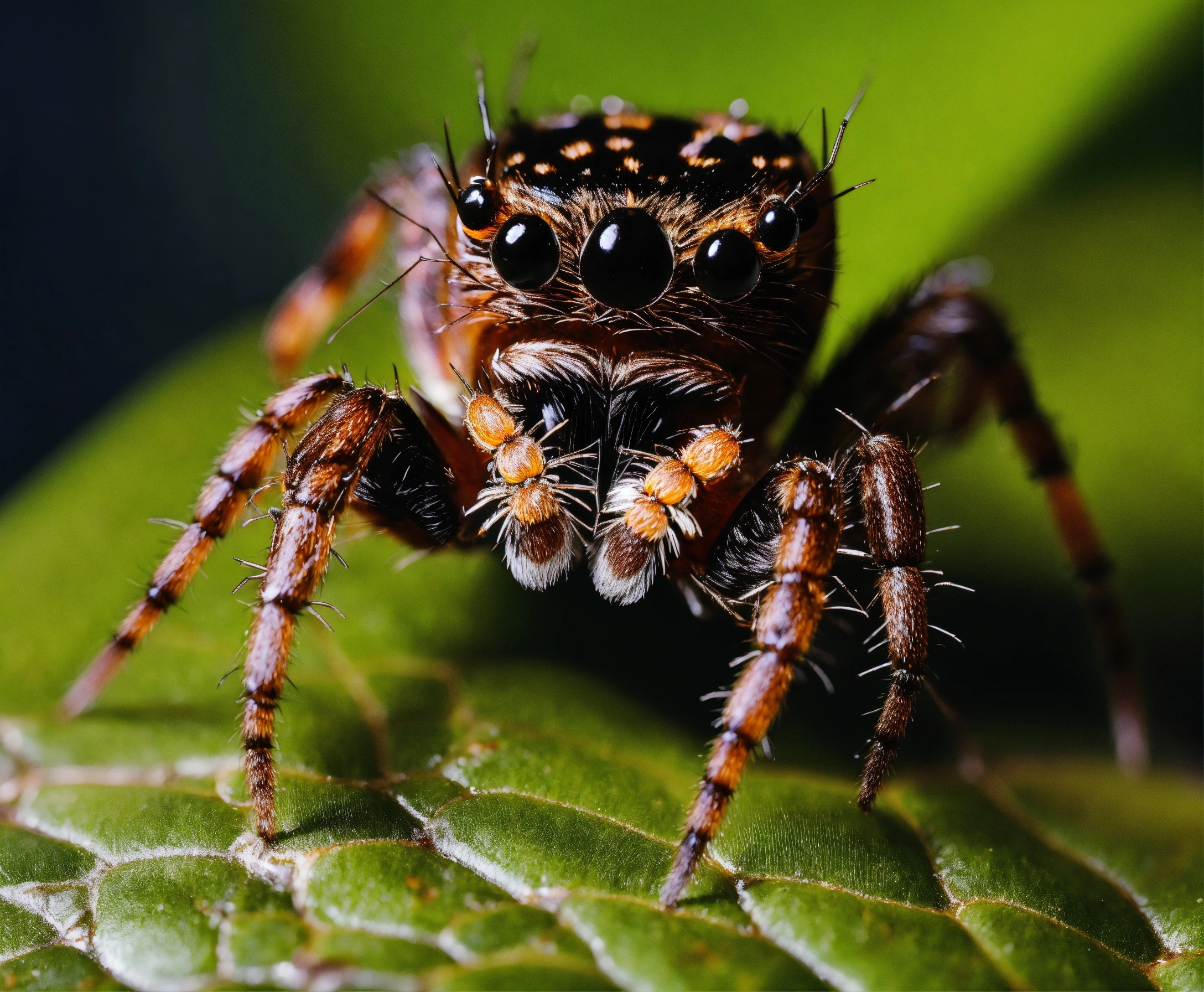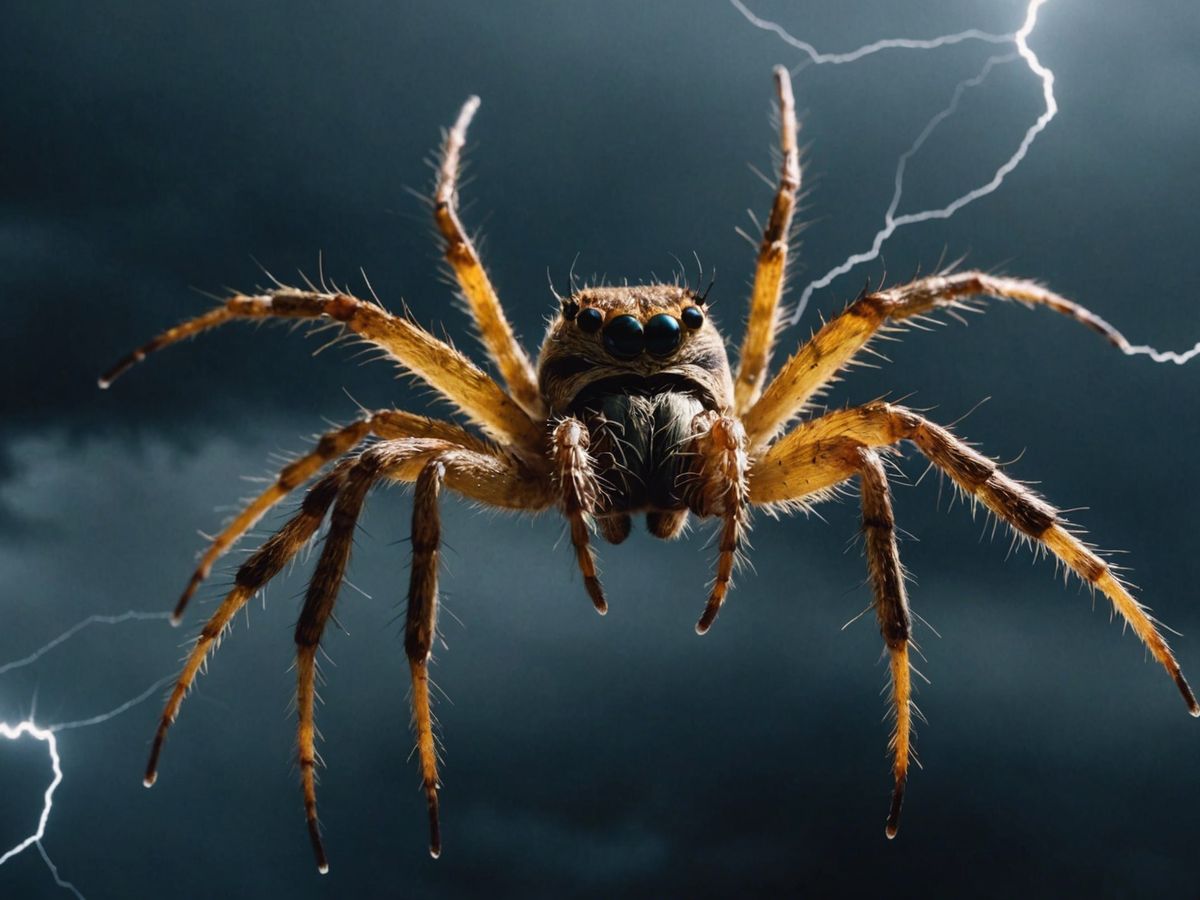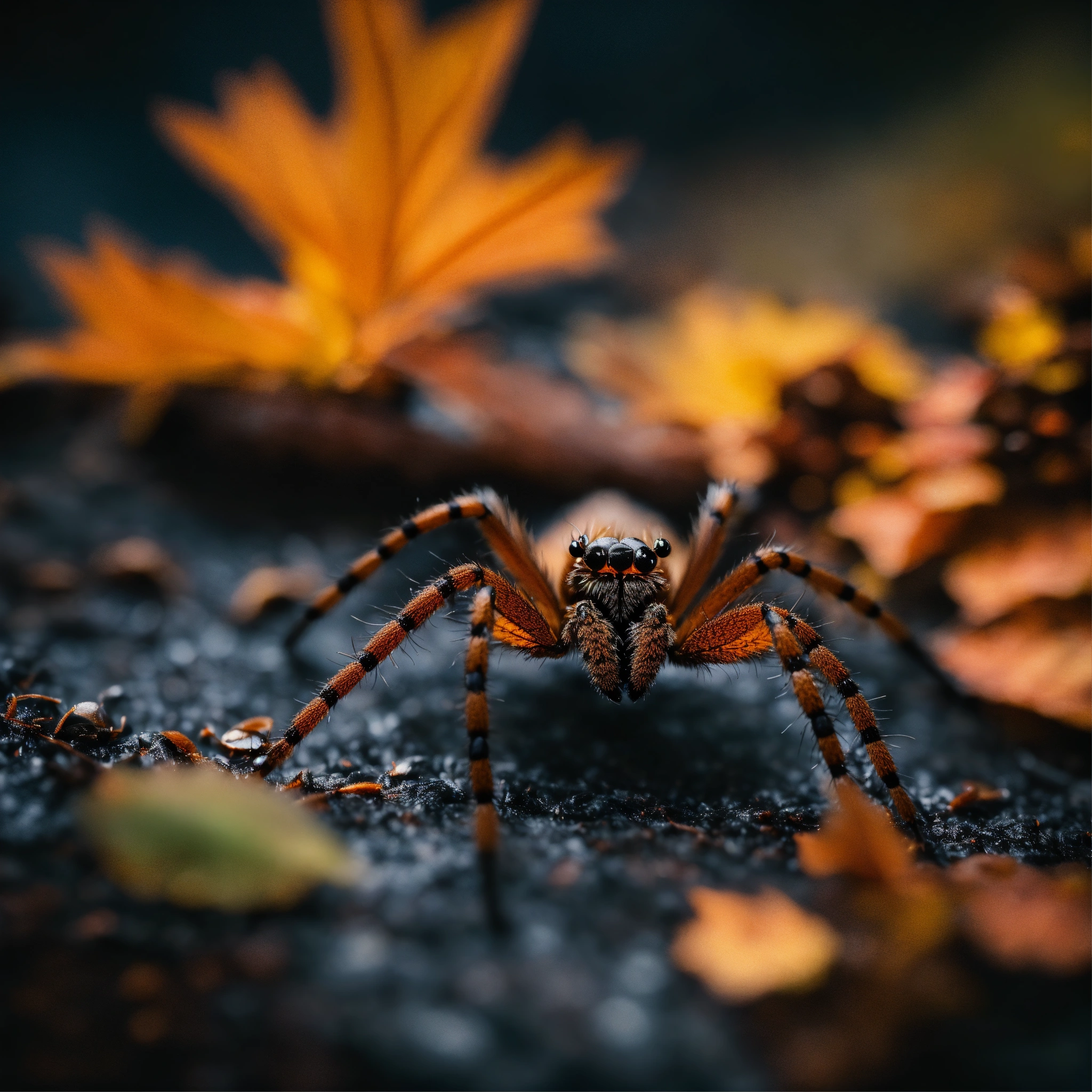Flying Spiders: If you live in the New Jersey and New York area, brace yourself—giant venomous spiders could soon be flying your way. The Giant Joro Spider (Trichonephila clavata), known for its striking black and yellow appearance and large size, has recently been making headlines as it spreads across the United States. Originally from East Asia, these spiders have the ability to travel through the air using a technique called ballooning, raising concerns about their potential impact on local ecosystems and human populations.
Key Takeaways
- The Giant Joro Spider is native to East Asia and has recently been spreading across the United States.
- These spiders can travel through the air using a technique called ballooning, which allows them to disperse over large distances.
- While venomous, the Joro Spider’s venom is weak and poses little threat to humans, as their fangs are not capable of piercing human skin.
- The spread of Joro Spiders could disrupt local ecosystems by displacing native species and altering insect populations.
- Public reactions vary, with media coverage stirring both fear and curiosity, while experts emphasize the need for monitoring and research.
The Arrival of Giant Joro Spiders in the US
How They Got Here
Experts suspect that the spiders came to the U.S. because they were accidentally transported through cargo shipments, international trade, or personal travel. While exactly how they were brought to the U.S. is uncertain, the consequences of their arrival are becoming increasingly evident. Georgia is believed to be the ground zero of the Joro spider invasion.
Current Spread Across States
The Joro spider, which arrived in the southeastern U.S. in 2013, will eventually spread up and down the East Coast. This venomous spider can grow to the size of an adult’s palm. Since then, the unnervingly large arachnids were spotted in Georgia in 2021, spinning their large, orb-shaped golden webs all over people’s yards. They have been spotted as far north as Maryland, and experts say they may be crawling their way around New York as early as this summer.
Could Venomous Flying Spiders Be Dropping in on You Soon? The study found that Joro spiders will be able to inhabit most of the eastern U.S. Coyle has since clarified that there’s no set timeline on when the spiders will spread further.
 What Makes Joro Spiders Unique
What Makes Joro Spiders Unique
Physical Characteristics
The Joro spider is a striking arachnid, easily identifiable by its vibrant colors and large size. Females can grow up to four inches in body length, with legs spanning six to eight inches. Their bright yellow, blue, and red markings make them stand out. In contrast, the males are smaller and brown, often becoming prey to their female counterparts.
Behavioral Traits
Joro spiders exhibit fascinating behaviors that contribute to their survival and spread. One notable trait is their high metabolism, which is double that of the golden silk spider. This allows them to thrive in various environments, including colder temperatures. Additionally, they have a 77% higher heart rate, further enhancing their resilience. Despite their intimidating appearance, Joro spiders are surprisingly shy and tend to avoid human interaction.
The Science Behind Their Venom
Venom Composition
The venom of the Joro spider is a complex mixture of proteins and enzymes. These components are designed to immobilize their prey, which primarily consists of insects. Despite their venomous nature, the Joro spider’s venom is not a significant threat to humans. The potency of their venom is relatively low compared to other venomous spiders.
Effects on Humans
While the Joro spider is venomous, their bites are generally harmless to humans. Their fangs are quite small and often cannot penetrate human skin. Even if a bite does occur, the effects are usually mild, causing minimal pain and irritation. This is reassuring for those concerned about the potential danger posed by these spiders.
The Joro spider’s venom is weak, and their fangs are too small to pierce human skin, making them unlikely to cause harm.
How Joro Spiders Travel
Ballooning Technique
Joro spiders have the ability to relocate themselves through a “ballooning technique” in which they spin a web to catch air currents. This method allows them to travel up to 50 to 100 miles away. They fly through the air on a strand of silk, parachuting into new areas to expand their range. This is particularly common among newly hatched Joro spiders.
Hitching Rides on Vehicles
These spiders are also adept at hitching rides on cars, trucks, and even shipping containers. The potential for these spiders to be spread through people’s movements is very high. Anecdotally, right before a study was published, a grad student at UGA accidentally transported one of these spiders to Oklahoma. This ability to catch a ride on various modes of transportation further aids in their rapid spread across North America.
Impact on Local Ecosystems
Displacement of Native Species
The introduction of the Joro spiders can disrupt the delicate balance of local ecosystems. These spiders are not picky eaters and can consume a wide variety of insects, which may lead to the displacement of native species. Some experts have branded them as invasive because they can wipe out other critters on the food chain. However, Andy Davis, a researcher at the University of Georgia, argues that they might serve as a food source for birds, thus having little impact on local food webs.
Changes in Insect Populations
Joro spiders don’t seem to care what gets in their web; they’re just as likely to eat brown marmorated stink bugs as they are to eat a Monarch butterfly. This indiscriminate feeding behavior can lead to significant changes in insect populations. David Coyle, a professor at Clemson University, explained that these spiders are not just benign creatures; they are pushing out native species and catching and killing whatever happens to get in their webs.
The jury is still out on the Joro spiders’ impact on natural habitats. While some experts see them as a threat to native wildlife, others believe their presence might not be as harmful as initially thought.
Public Reactions and Concerns
Media Coverage
The arrival of Joro spiders has generated extensive media coverage, with headlines often emphasizing their size and potential threat. News outlets have reported on the spiders’ spread and their unique ability to travel by ballooning, which has captured public interest and concern.
Expert Opinions
Experts have weighed in on the situation, providing insights into the actual risks posed by Joro spiders. While some scientists highlight the low risk to humans, others emphasize the need for monitoring their impact on local ecosystems. Public demands transparency in understanding the true implications of this invasive species.
What to Do If You Encounter One
If you come across a Joro spider, it’s important to remain calm. These spiders are generally not aggressive towards humans. You can safely relocate them using a container and a piece of paper. If you’re unsure, contacting local pest control can be a good option.
Preventing Their Spread
Preventing the spread of Joro spiders involves several steps:
- Inspect outdoor items before moving them to new locations.
- Seal cracks and gaps in your home to prevent entry.
- Educate your community about the importance of monitoring and reporting sightings.
Understanding the public’s reaction to Joro spiders is crucial for managing their spread and mitigating any potential negative impacts on local ecosystems.
Safety Measures and Precautions
What to Do If You Encounter One
If you come across a Joro spider, remain calm and avoid making sudden movements. These spiders are not aggressive and will typically retreat if given the chance. It’s best to observe from a distance and not attempt to handle them. If the spider is in your home, you can use a container to gently trap and release it outside.
Preventing Their Spread
To help prevent the spread of Joro spiders, inspect outdoor items like camping gear, vehicles, and gardening tools before moving them to new locations. This can help reduce the chances of accidentally transporting these spiders to new areas. Additionally, keeping your home and garden tidy can minimize the likelihood of Joro spiders taking up residence.
Taking these precautions can significantly reduce the risk of encountering Joro spiders and help control their spread.
Media Coverage
The arrival of Joro spiders has garnered significant media attention, with headlines warning of their potential spread. This has led to a mix of public reactions, ranging from curiosity to concern. It’s important to stay informed through reliable sources and not to panic.
Expert Opinions
Experts suggest that while Joro spiders are not a major threat to humans, their presence should be monitored. They recommend taking simple precautions to avoid encounters and to help prevent their spread. By staying informed and following expert advice, you can effectively manage any potential risks associated with these spiders.
Comparisons to Other Invasive Species
Murder Hornets
Murder hornets, also known as Asian giant hornets, have garnered significant media attention due to their intimidating size and aggressive behavior. These hornets pose a threat to honeybee populations, which are crucial for pollination. Unlike Joro spiders, murder hornets can deliver painful stings that are dangerous to humans. Their presence has led to increased efforts in monitoring and controlling their spread.
Spotted Lanternflies
Spotted lanternflies are another invasive species causing concern in the United States. These insects are known for their destructive feeding habits, which can severely damage crops and trees. The economic impact of spotted lanternflies is substantial, affecting agriculture and forestry industries. In contrast, Joro spiders may offer some benefits by preying on pests like stink bugs, although their overall impact on native species remains a topic of study.
The introduction of invasive species like murder hornets and spotted lanternflies highlights the need for vigilant monitoring and management to protect local ecosystems.
Similarities and Differences
Both Joro spiders and other invasive species like murder hornets and spotted lanternflies share common traits that make them successful invaders. They are often highly adaptable and can thrive in new environments. However, the effects on humans and ecosystems can vary significantly. While murder hornets pose direct threats to human safety, Joro spiders are more of a concern for their potential impact on native wildlife.
| Invasive Species | Threat to Humans | Impact on Ecosystems |
|---|---|---|
| Joro Spiders | Low | Potential displacement of native species |
| Murder Hornets | High | Threat to honeybee populations |
| Spotted Lanternflies | Low | Damage to crops and trees |
Understanding these differences is crucial for developing effective strategies to manage and mitigate the impact of invasive species.
Future Predictions
Potential Spread
Experts have long been predicting the massive spread of Jorō spiders across the east coast, with an ecologist at Rutgers University telling DailyMail.com in 2023 that they should be in New Jersey and New York ‘possibly even next year.’ Because their main methods of dispersal are to either ‘balloon’ with the wind, or hitch rides on cars, they are generally going to spread to where the wind blows, or where humans are.
Long-term Effects
The long-term effects of the Jorō spider invasion are still uncertain. However, it is likely that they will have a significant impact on local ecosystems. They may displace native species and alter insect populations. The full extent of these changes will only become clear over time.
The arrival of these spiders could lead to unforeseen ecological shifts, making it crucial to monitor their spread and impact closely.
Conclusion
While the idea of venomous flying spiders might sound like something out of a horror movie, the reality is a bit less dramatic. The Jorō spider, despite its intimidating size and appearance, poses little threat to humans. Their venom is weak and their fangs are not capable of piercing human skin. However, their presence does raise concerns about the impact on local ecosystems, as they can outcompete native species. As these spiders continue to spread, it will be important to monitor their effects and take steps to mitigate any negative impacts. So, while you might not need to worry about these spiders dropping in on you, it’s always good to stay informed and prepared.
Frequently Asked Questions
What are Giant Joro Spiders?
Giant Joro Spiders (Trichonephila clavata) are large, venomous spiders originally from East Asia, known for their striking black and yellow coloration and their large size, which can reach up to eight inches across.
How did Joro Spiders arrive in the US?
Joro Spiders are believed to have arrived in the US around 2014, likely through international shipping and trade. They have since spread across multiple states.
Are Joro Spiders dangerous to humans?
While Joro Spiders are venomous, their venom is relatively weak and their fangs are generally unable to pierce human skin. There have been no documented fatalities from their bites.
How do Joro Spiders travel?
Joro Spiders use a method called ballooning, where they release silk threads to catch the wind and float to new locations. They can also hitch rides on vehicles.
Where have Joro Spiders been found in the US?
Joro Spiders have been found in several states, including Georgia, South Carolina, and more recently, they are expected to spread to northeastern states like New Jersey and New York.
What impact do Joro Spiders have on local ecosystems?
Joro Spiders can displace native species and alter local insect populations by preying on a wide range of insects. This can have cascading effects on the ecosystem.
What should I do if I encounter a Joro Spider?
If you encounter a Joro Spider, it’s best to avoid disturbing it. You can contact local pest control if you need assistance. Preventing their spread involves checking vehicles and outdoor equipment for spiders before traveling.
How do Joro Spiders compare to other invasive species like Murder Hornets and Spotted Lanternflies?
Like Murder Hornets and Spotted Lanternflies, Joro Spiders are an invasive species that can significantly impact local ecosystems. However, each species has unique behaviors and ecological effects.


